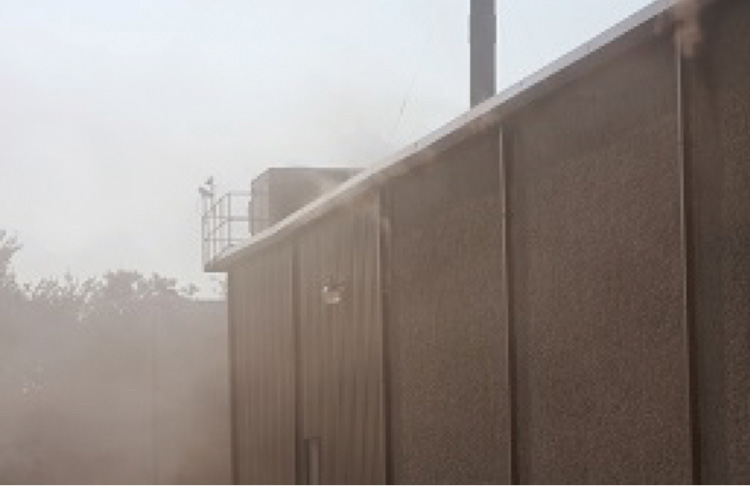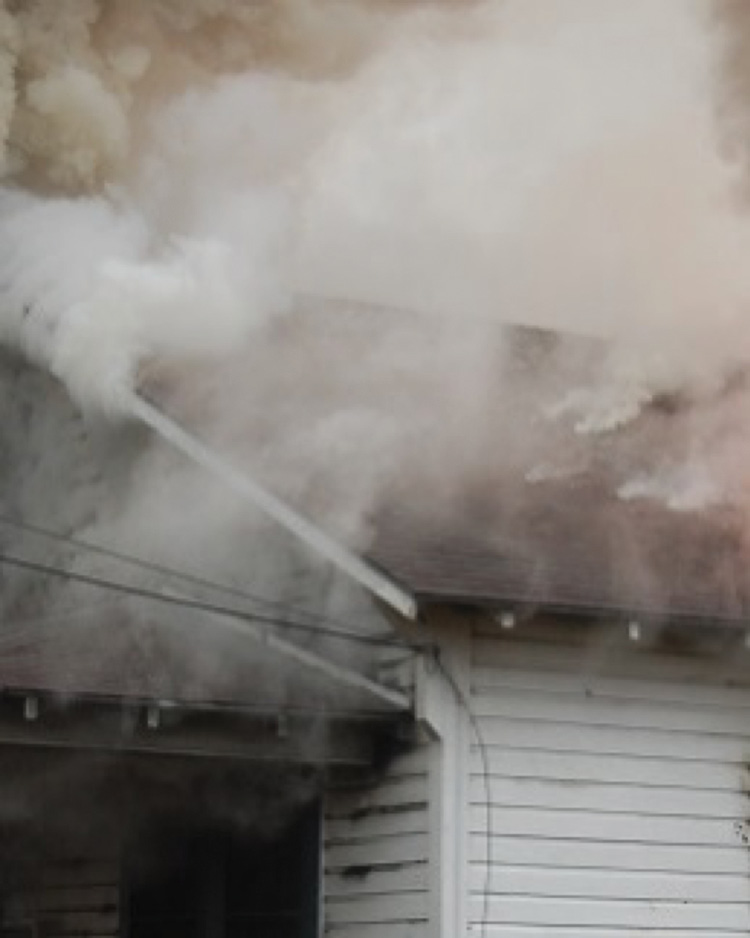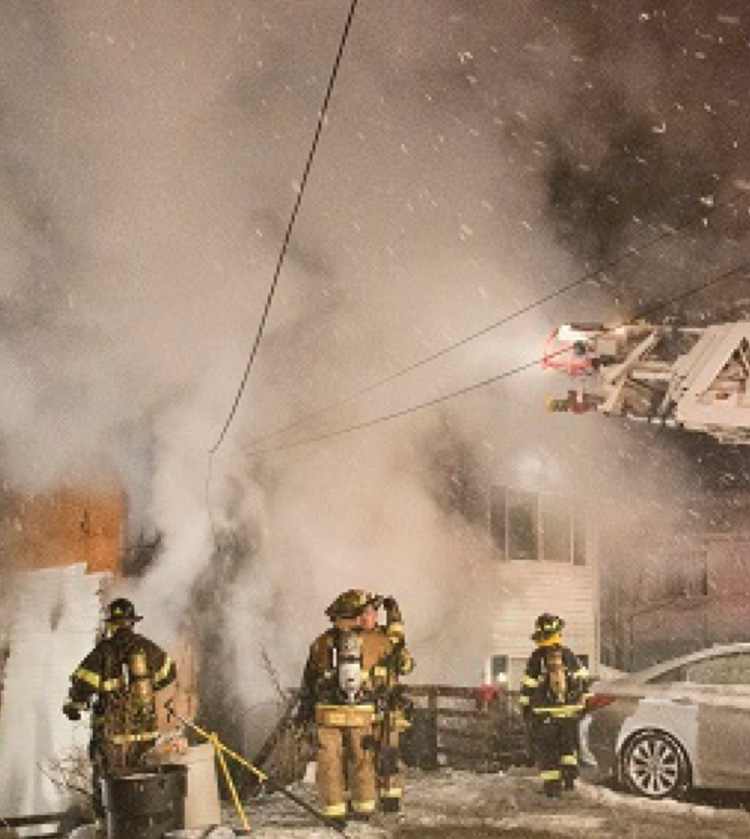
By Rob Backer, Dave Dodson, and Phil Jose
The art of reading smoke (ARS) is not a one-hour DVD training, a four-hour workshop, or even a full-day classroom experience. Reading smoke is a learned skill set that improves with education, practice, and application. Most ARS practitioners are introduced to the topic through one of the aforementioned methods, typically leading to self-empowerment, skill-learning excitement, and experience reinforcement. Developing ARS skills also leads to questions, and—as we have found—many inquiries seeking greater understanding of the topic. The “most-asked” questions or inquiries we receive are linked to the observations of white smoke or “light smoke” showing on arrival at an incident. Those inquiries are most welcome and go something like this:
“I was at your reading smoke class last month. You said that dirty white smoke with high velocity means a hot fire, far away. We had a fire last shift and on arrival found dirty white cold smoke that was slow. We started investigating only to find a hot fire burning in a large, closed, and locked storage room. We were caught off guard but were able to adjust quickly and kept the fire from spreading. Did I miss something in class or was this some kind of unusual event?”
As ARS instructors, our first reaction is a satisfying realization that one of the “rapid-recognition shortcuts” presented in class was remembered! We also recognize that some of the science and process thinking we present may not have made it all the way to the incident scene. Although the ARS curriculum dives into science—the physics and chemistry of understanding smoke attributes and concept—it is understandable that some students lose this critical information transitioning from the classroom and into fire station conversations and the fireground. Although it is natural to suffer some information loss, as instructors, our years of presenting the material tell us that developing the ARS skill set is an ongoing endeavor. Bloom’s Taxonomy1 shows that skills in the lower order of comprehension provide the foundation for higher levels of cognition. The lowest level of learning is remembering. What is the easiest portion of the class to remember? The rapid-recognition shortcuts! As educators, we strive to help students achieve higher levels of cognition: understanding, applying, analyzing, and evaluating.
To understand what it is we’re seeing that doesn’t make sense, we need to take a more critical look at what is in front of us. For the inquiry above, the critical look must include questions regarding the relationship of the cold, white smoke to whether it was inside or outside the building; the building size, distance, and obstacles to the fire; and outside weather conditions.
The volume, velocity, density, and color (VVDC) of smoke that you see must always be diagnosed in relationship to where you see it, from what it is escaping, and the effect of weather on it. Labeling observed smoke as “white smoke,” “light smoke,” “old smoke,” or “cold smoke” is inadequate in this context.2
Now, don’t get us wrong. We’re not talking about short, on-scene radio reports; we’re talking about actually making a “read” on the smoke.3 Given that, let’s look a little deeper at the observations of “white smoke” or “cold smoke” and address some of the phenomena and traps associated with it.
Clean, uniform, pristine white smoke with rapidly dissipating volume and density = STEAM
This may be obvious to you, but know that firefighters have been, and can be, fooled by steam. Key here are the uniform, bright white color and the fact that it dissipates quickly in the outside air. If this combination is viewed coming from a large (or big-box) building with an activated fire suppression sprinkler system, crews can expect an advanced fire that the sprinkler is struggling to contain. Remember also that the first or early stages of pyrolysis will include the “off-gassing” of moisture from the heated fuel (especially wood and other porous products). If you see roofing materials starting to steam off with a known interior fire, conclude that fire has entered the attic space and is heating the deck through conductive transfer (photo 1).

(1) The clean white smoke coming from roofing materials is conductive heating steam, resulting from the fire in the attic space below. (Photo by Dave Dodson.)
Dirty white smoke with laminar high velocity or turbulence = Hot fire, far away
One rule we teach is that smoke velocity (speed and flow) takes precedence over color. A hot interior fire should be producing fast, black smoke in some form (laminar or turbulent, thick or thin), but the very products that make smoke black (carbon and hydrocarbons) will stick, cake, or fall onto anything they touch (walls, ceiling, contents). Over distance and when restrictive smoke flows through cracks and seams, the black particulates and aerosols are stripped away or “filtered,” leaving a dirty white smoke. Therefore, don’t be fooled by dirty-white smoke that is moving fast. The same surfaces that can filter smoke can also serve as a heat sink that will calm turbulent smoke (make it laminar). If you see fast moving dirty-white (filtered) smoke that is still turbulent, you can conclude that the surfaces have lost the ability to absorb heat—a setup for flashover.
Low-volume, slow laminar, thin, and wispy-white smoke from a SMALL building or single room = Small fire or one that is cold smoldering
We have to be careful with this observation, as firefighters should start off thinking worst case until confirmed. If this combination is coming from an open door or a window of a small compartment, the conclusion of a small fire is warranted. If it is emitting from building element cracks and seams of a closed-up building, suspect a larger fire that may be ventilation-limited (a hot decay stage), and prepare for the worst case (see “White Smoke Warning” below).
Low-volume, slow laminar, thin, and wispy-white smoke from a LARGE building or an interior space = Big fire deep within
Note that the description of this smoke is almost identical to the one above. The difference is the building size. In our opening inquiry above, this phenomenon is most likely what happened. The interior volume of a building space is like a heat sink and filter. The larger the space, the more likely smoke VVDC attributes will be changed.
As an example, picture a well-involved car fire. If that car was inside a small four-bay service garage, you’d see high-volume, fast, thick black smoke leaving the building. Put the same car fire in a big-box store like a Lowe’s or Home Depot, and you may not see any smoke leaving the building—even with the doors open. As the smoke fills the large space and is cooled, the VVDC attributes are minimized or lost altogether within the space (photo 2).
Uniform velocity, uniform dirty-white thin smoke pushing out of multiple building element cracks and seams = Deep-seated fire
Smoke coming from a fire in a room or other open space within a building should produce smoke that, when viewed from outside the building, varies in VVDC: Smoke venting to the outside should be faster/darker closer to the fire and slower/whiter farther from the fire. If arriving firefighters find smoke that is uniform in velocity and color emitting from multiple types of openings (windows, doors, cracks and seams), they should suspect a deep-seated fire. Fires that originate in or spread to combustible void spaces can quickly pressurize that space with enough energy to push the smoke through cracks and seams. This will alter the smoke to a neutral color and speed that is usually dirty white or light grey with a slow but steady laminar velocity. A defining observation here is that the smoke looks the same from multiple cracks and seams and even open doors and windows. In the latter, suspect the fire is in the walls, floors, or basement. The observation of “same color, same speed” from multiple elements has also been noted from growing fires in glass curtain-walled high-rise buildings that have not yet broken to the outside.
![A small volume of wispy white smoke leaving more than one area of a large building can indicate a big fire within. [Photo courtesy of the Frisco (TX) Fire Department.]](https://emberly.fireengineering.com/wp-content/uploads/2019/03/1903FE_FDIC_Dodson-p02.jpg)
(2) A small volume of wispy white smoke leaving more than one area of a large building can indicate a big fire within. [Photo courtesy of the Frisco (TX) Fire Department.]
Bright white, high-velocity smoke showing when the outside air temperature is frigid = Big Fire
When outside air temperatures are well below freezing, hot dark smoke leaving the building turns white almost instantly (photo 3). This phenomenon is the result of moisture or humidity condensing within the smoke. As a child (or a seasoned veteran firefighter), you may recall “blowing smoke” on frigid days using just the moisture in your breath when you forcefully exhaled. Smoke can do the same thing!
Smoke, in most cases, is quite humid (water vapor and other aerosols). As the smoke leaves the building and contacts the frigid air, water vapors rapidly condense and can form a white fog-like coating on all of the hot particulates and other aerosols in smoke. The thicker the smoke, the more pronounced this white fog will appear. Obviously, the outside perimeter of the smoke plume has the most contact with frigid air; therefore, it will appear whiter to the firefighters outside. Even in cases where the fire is burning hot and clean with little visible smoke, the thermal plume leaving the building can turn white as it contacts frigid, humid air—it’s just that the volume and density will be much less as there are fewer particulates to capture and emphasize the white color.
White smoke WARNING: Ventilation-limited fires
There is growing evidence that ventilation-limited fires present some VVDC smoke behaviors that may confuse arriving suppression crews. We are aware of, or have witnessed, several anecdotal incidents where responding suppression forces have noticed a large-volume, dark gray or black smoke plume rising high into the sky, only to arrive and find a reduced volume of slower, dirty-white smoke leaving the fire building. What caused such a change? The most likely answer is that the fire within the building became ventilation-limited during their response. We know that as a fire grows and releases more heat, more of the uninvolved fire load off-gases (pyrolysis), leading to a rapid expansion of total smoke volume, increasing velocity/density, and darkening of the smoke color (that’s the dark-smoke header they saw while responding). The fire consumes available oxygen while the expanding smoke volume and density from pyrolysis fill building compartments, displacing any remaining air. This duality results in less open burning (flaming) and, thus, less high-velocity black smoke. Within the building, heat begins to drop with a corresponding reduction in smoke volume and velocity4 and the production of more dirty-white vs. black smoke. Although the heat within the building begins to decrease when the fire is ventilation-limited, enough heat remains so that the introduction of air (firefighters opening up the building) can lead to smoke gas ignition and the explosive growth of the fire. When a ventilation-limited fire is suspected, disciplined fire suppression ventilation efforts and protective smoke cooling become essential.5
You can see that “white smoke” as a singular description can be misleading. Decision makers should understand that smoke color alone can lead to dangerous conclusions regarding fire behavior and firefighting progress. Likewise, we know that white smoke (steam) is an indicator that fire attack water is making a difference. Again, this can be misleading. As we just discussed, fighting fires in subfreezing weather can make the smoke change to white almost instantly. Strategic and tactical decisions should be influenced more by the other three smoke attributes: volume, velocity, and density. Of these, velocity is perhaps the best indicator of heat. Violent, turbulent, or highly agitated smoke velocity is an indicator of severe heat (regardless of color) and should be treated as such to help locate the fire and evaluate fire attack effectiveness and options. In other words, velocity trumps color when it comes to judging heat. Simply put (because firefighters love shortcuts), velocity is king. That leads us to the question: When is white smoke an indication that our firefighting efforts are working?

(3) Black smoke can instantly turn bright white when contacting outside, frigid air. (Photo courtesy of Keith Muratori, Firegroundimages.com.)
The answer to this question is also found in VVDC observations:
Water on fire—successful: You should see a surge in volume (steam expansion); a transition from turbulent to laminar/slowing velocity; a thinning density; and clean, billowing white smoke that starts to dissipate more quickly in outside air (consider the weather conditions). Peripheral or pyrolytic-generated smoke slows quickly or ceases to exist.
Water on fire—insufficient: The attack is insufficient when the development of fire stream white smoke is not overtaking other smoke attributes. If volume is increasing, velocity remains turbulent/agitated, smoke density is getting thicker, white stays dirty—as opposed to clean—and pulses of black smoke remain in the smoke flow paths, conclude that the fire attack is not sufficient. Likewise, if smoke distal to the fire seat is not changing or is getting worse, the fire attack is behind the power curve.
One last point: Firefighters who have knocked down a compartment fire may report successful progress, and the smoke from that area may even confirm that. An outside view, however, may show that smoke coming from other areas is not improving or is getting worse in VVDC observations. This is where a dedicated safety officer (outside view) and tactical supervisors can make a difference. Don’t rely solely on the progress report of an interior fire attack crew; compare their report with other smoke VVDC observations. Incident commanders and safety officers must consider the rate of smoke VVDC change (getting worse in seconds or minutes?) and compare that with building construction, acceptable risk-taking criteria, and deployed resources to make a judgment regarding the current fire attack strategy and tactics or a potential switch to defensive operations.
Endnotes
Rob Backer is a captain with the Thornton (CO) Fire Department, where he has served for the past 14 years. He oversees the operations of Station 6 and Engine 76. He is a 16-year veteran of the fire service and began his career with the Evans (CO) Fire Department. He has a B.A. in political science. He teaches the Reading Smoke curriculum nationally.
Dave Dodson is a fire service author/educator. He is a 40-year veteran of the fire service and was a member of the U.S. Air Force and the Parker and Loveland (CO) Fire Departments. In 2017, he was the first recipient of the Fire Department Safety Officers Association’s “Lifetime Achievement Award.” In 1997, he was the Fire Engineering/ISFSI George D. Post Instructor of the Year.
Phil Jose retired from the Seattle (WA) Fire Department as a deputy chief of training; previously, he was a shift commander. Jose is a 35-year fire service veteran. He is a co-author of Air Management for the Fire Service (PennWell, 2008) and a recipient of the FDIC Tom Brennan Training Achievement Award. He teaches nationally on reading smoke, tactical decision making, air management, and instructor development.
RELATED
Phil Jose: Reading Smoke and the Transfer of Command Process
Training Bulletin: Reading Smoke
David Dodson: The Art of Reading Smoke Revisited

